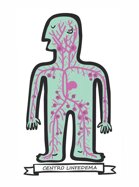WHAT IS LYMPHEDEMA?
Lymphoedema is defined as an abnormal accumulation of protein-rich fluid in the interstitial tissue, associated with chronic inflammation and tissue fibrosis. It can result from the surgical removal of lymph nodes or their malfunction.
In terms of its genesis, lymphoedemas are classified as:
Primary (congenital) lymphoedemas
Secondary lymphoedemas due to surgical interventions, radiotherapy, trauma (e.g., burns), or road accidents.
It is a common and widespread condition globally, with different aetiologies across countries: approximately 90 million people worldwide are affected by lymphoedema caused by parasitic infections (filariasis), while around 10 million suffer from secondary lymphoedema due to surgery for breast and pelvic cancers, vascular surgery, recurrent infections, and trauma. Including those with chronic vascular insufficiency, the estimated number of cases rises to 300 million.
In paediatric cases, where lymphoedema presents congenitally, only 10% of existing cases are diagnosed worldwide. This is due to difficulties in accessing diagnosis and treatment, making lymphoedema a hidden epidemic.
The reduction of lymphatic drainage is linked to a chronic inflammatory process, establishing a lifelong pathological condition for patients. Limbs are predominantly affected, significantly impacting the quality of life.
Impact of Lymphoedema on Quality of Life
Chronic swelling of a limb or part of it.
The disease is progressive and tends to worsen over time.
Increased limb weight, limiting mobility.
Recurrent episodes of infection may require hospitalisation.
Tissue thickening and hardening can lead to fibrosis, further skin conditions, and ulcerations.
Problems with clothing and footwear selection.
Lifestyle and work modifications, especially if the occupation worsens lymphoedema.
Onset of depression and progressive social isolation.
Types of Surgical Interventions
Surgical techniques are considered for cases unresponsive to medical treatment and include two types of interventions: ablative and physiological. The choice of technique, or combination thereof, is based on consultation, patient discussions, and the results of lympho-MRI, a preoperative examination providing a direct view of the type and degree of lymphoedema. For each case, a personalised therapeutic plan is established according to the patient’s individual needs to achieve the highest standard of care possible. The goal is to help the patient regain as much autonomy as possible, finding a compromise between theoretical guidelines and the patient’s lived experience.
Ablative Surgical Procedures
These focus on removing pathological tissue using various techniques, all aimed at reducing the weight and size of the affected areas.
Modified Liposuction: Generally reserved for cases with fibrotic tissue (so-called lipoedema), this technique allows selective reshaping while preserving competent lymphatic pathways. It can be combined with other ablative and physiological interventions to achieve more targeted and comprehensive care.
Reduction Surgery: Typically reserved for severe lymphoedema cases with substantial fibrotic tissue. This surgery aims to alleviate problems related to the size and weight of affected limbs, improving the patient’s quality of life. It also facilitates the activity of competent lymphatic vessels, helping break the cycle of irreversible disease progression. Reduction surgery is often combined with physiological interventions or liposuction for a more sophisticated level of care.
Physiological Surgical Procedures
These aim to reconstruct competent lymphatic pathways, allowing for the drainage of excess lymph from the affected areas. These interventions are performed using specialised techniques with the aid of an operating microscope.
Lymph Node Transplantation (ALNT - VLNT): Reserved for cases with hypoplastic or absent lymph nodes, or interruptions in lymphatic drainage flow. The procedure involves the autologous transplantation of a flap containing lymph nodes from donor areas like the lateral cervical, dorsal, and inguinal regions. This facilitates excess lymph reabsorption and establishes a new long-lasting equilibrium through the formation of new lymphatic vessels. Autologous lymph node transplantation is also indicated for preventive purposes in oncological patients, combining oncological surgery with reconstructive surgery.
Lymphatic-Venous Anastomosis (LVA) or Lymphatic-Venous Bypass: This technique is indicated for cases of hyperplastic or hypertrophic lymphoedema, where lymphatic vessels are present but incompetent. The goal is to create multiple bypasses under a microscope between small lymphatic vessels and subcutaneous venules, diverting flow from the blocked lymphatic system to the venous system.
For more information, please visit www.centrolinfedema.it, the website of the team of experts of which I am a part.






